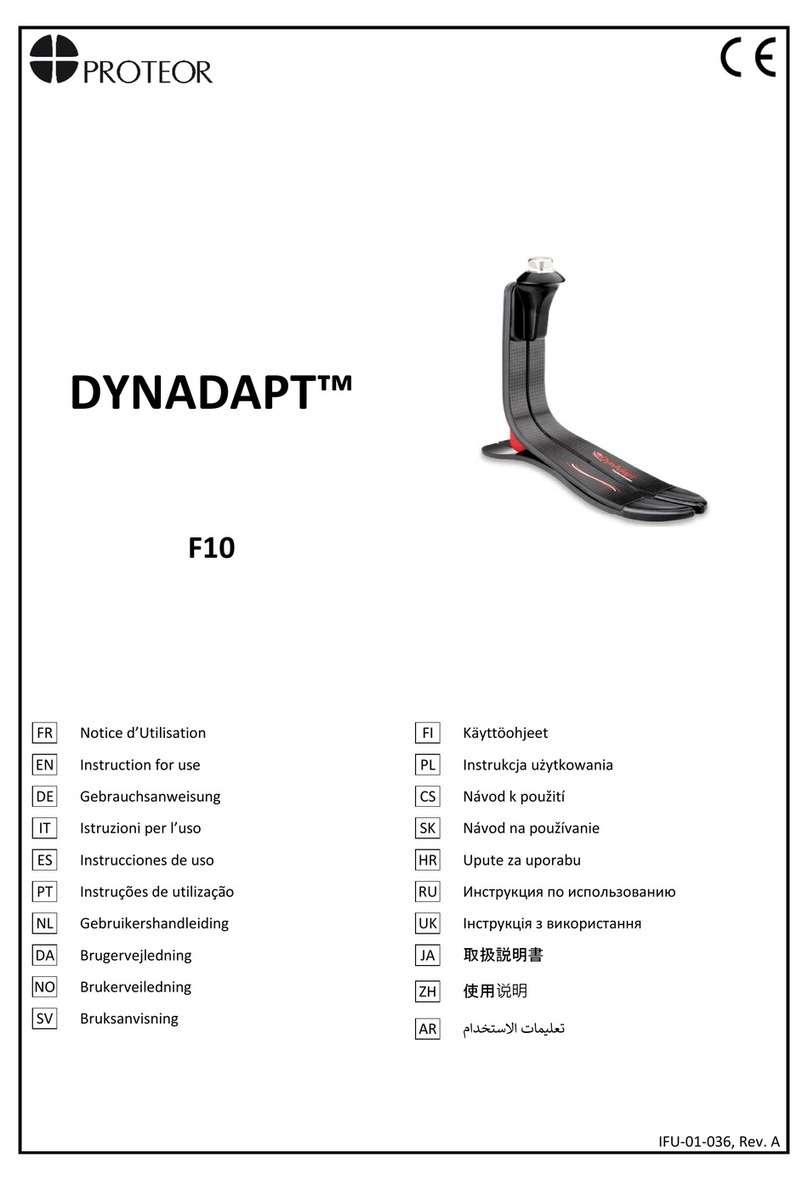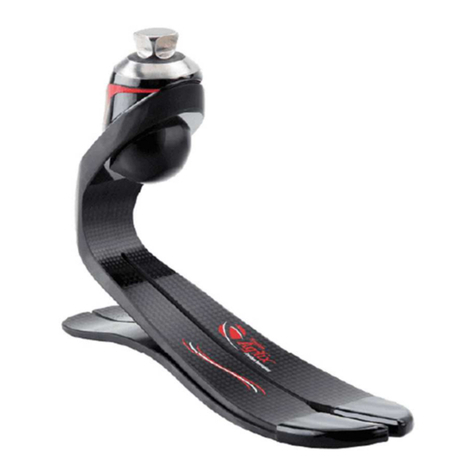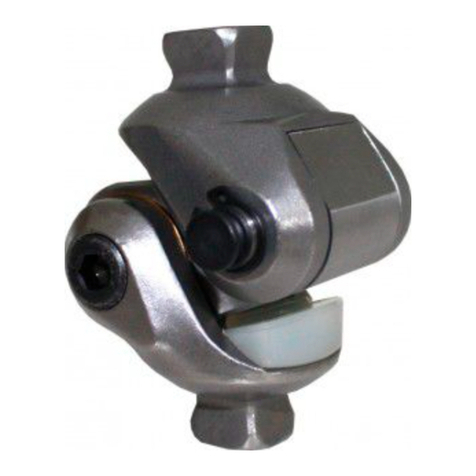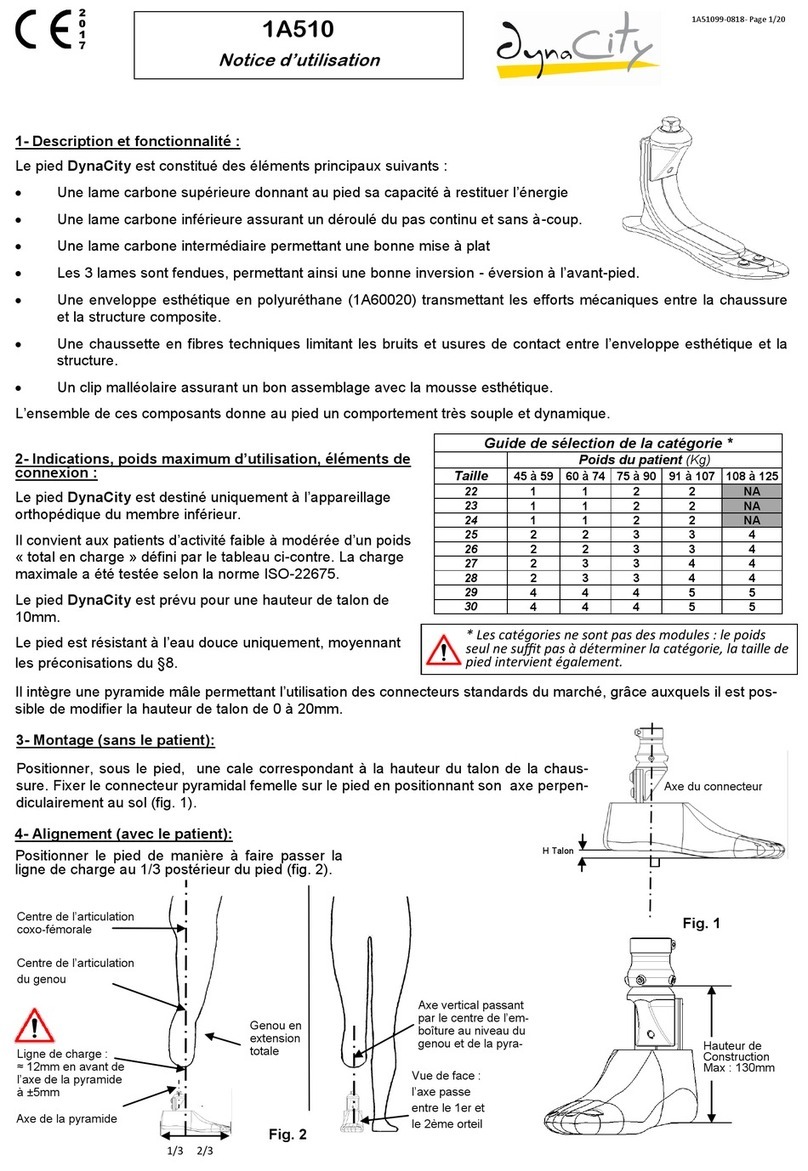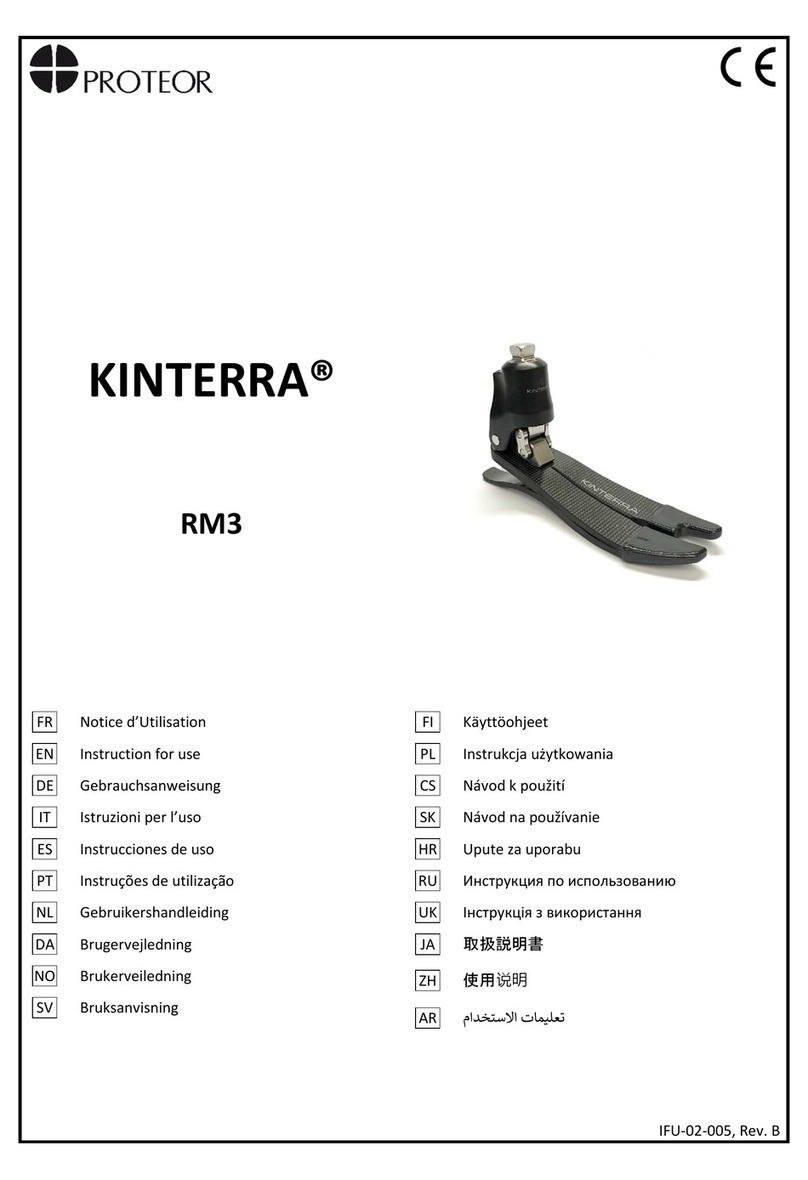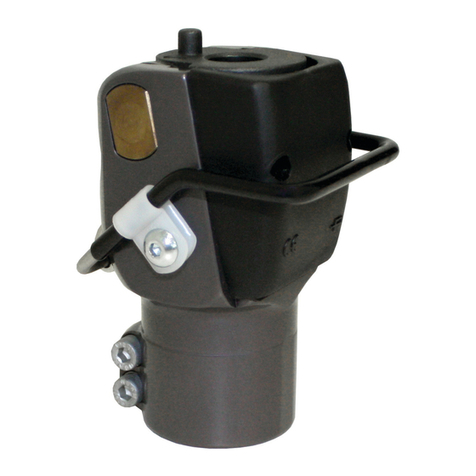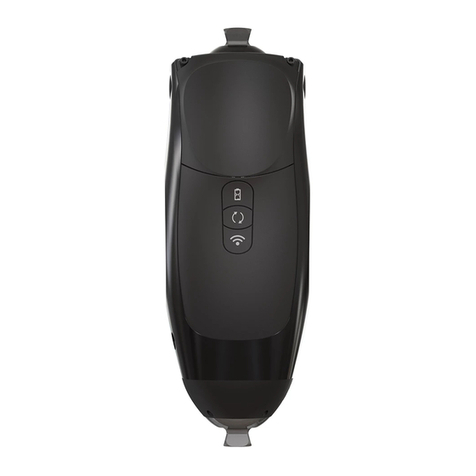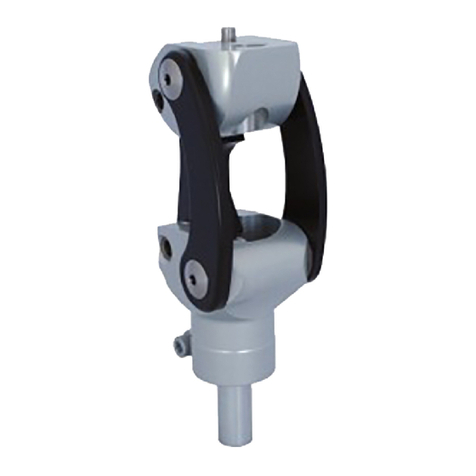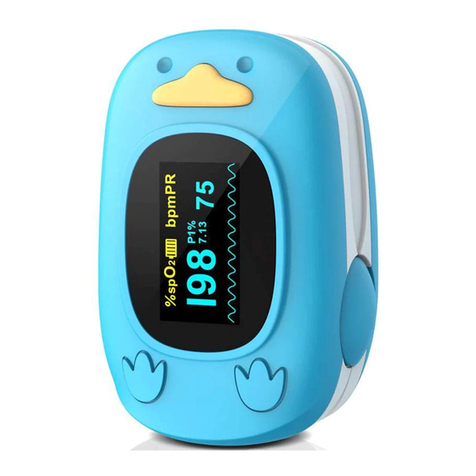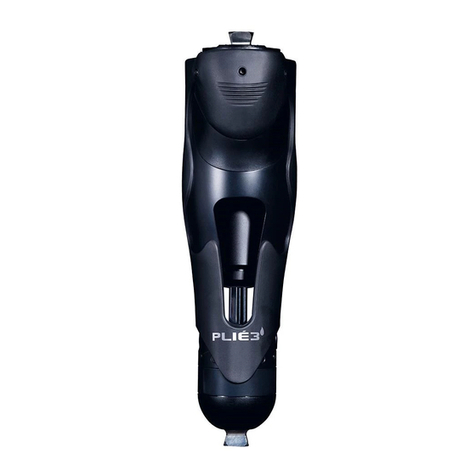
INSTRUCTIONS FOR USE Page 4 of 5
B. Adjusting the walking pace
On delivery, the knee is set up for walking at medium pace.
For patient safety reasons, the prosthetist/orthotist must begin the adjustment process with the knee set to its factory settings and
with the patient walking between parallel bars.
The model of foot used may have an effect on the adjustment of the knee. The knee should be readjusted whenever the foot is changed.
Prioritise patient safety in all circumstances, particularly to ensure that slopes and stairs can be negotiated safely.
fter performing any maintenance the knee must be readjusted.
To adapt the knee to the patient’s pace of walking, adjust hex set screws E and F
using an llen (hex) key.
It is advisable to perform these adjustments in the following order:
1. Adjusting the Flexion (F)
Turn hex set screw F: Screw in the set screw to reduce the angle of
flexion, and unscrew to increase it.
2. Adjusting the Extension (E)
Turn hex set screw E: Screw in to increase the cushioning of the
impact when the knee reaches full extension.
Once these adjustments have been made, ensure that the knee returns to full
extension when walking slowly to ensure that there is no risk of the patient falling.
C. Finishing
It is advisable to reinforce the cosmetic cover in front of the joint to prolong its service
life.
Maximum flexion stop:
When the patient is crouching or kneeling, the socket must come into contact with the
rear flexion limit on the rear linkage. It must not touch the rear linkage, or the plate,
since this might damage or destroy the knee.
The cosmetic cover may modify the initial knee settings and limit certain movements. It
is advisable to always check the operation of the knee, once the cosmetic cover has
been fitted.
7. DETECTING ANY MA FUNCTIONING
If you notice that the device is behaving abnormally or if its characteristics feel different, or if it has been badly knocked, consult your
prosthetist/orthotist.
8. WARNINGS, CONTRAINDICATIONS, SIDE EFFECTS
A. Warnings
Caution, the patient may need to take time to get used to a new knee.
To reduce the risk of falling when going down stairs, it is advisable to hold on to handrail.
So as not to damage the knee, do not apply talcum powder to eliminate rubbing noises - use silicon spray instead. Talc degrades
the mechanical components, which might cause a malfunction and possibly a fall.
PROTEOR disclaims all liability if talcum powder is used.
It is possible to trap a finger or pinch clothing in the knee joint. To avoid the any injury caused by the movement of the joint, make
sure that no-one’s hand or fingers is near the mechanism.
The knee is resistant to bad weather, but needs to be dried immediately if it does get wet. ny water that gets into the pneumatic
mechanism may lead to the deterioration of the extension assist spring and thus the destruction of the knee. It must, therefore, be
protected against any ingress of water
B. Contraindications
The following are strictly prohibited: removing the covers, screwing in or unscrewing any screws on the knee with the exception of
the two adjustment screws E and F.
Never lubricate the knee pins; this can cause them to degrade rapidly.
Rear flexion
limit: Contact
area with the
socket.
Linkages
Upper
plate
